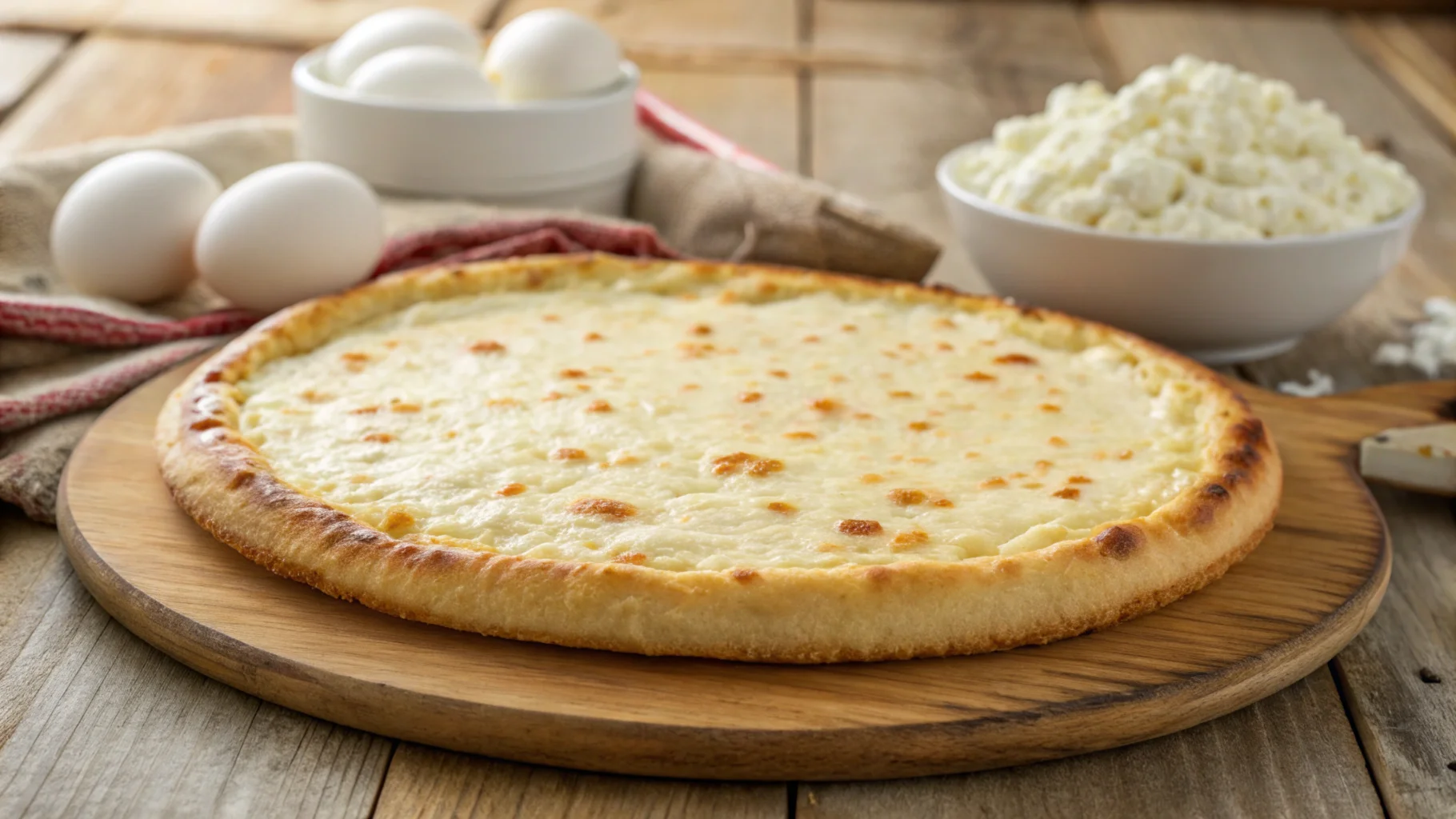Pizza lovers rejoice! If you’ve been searching for a healthier, protein-packed alternative to traditional pizza crust, you’re in for a treat. Cottage cheese pizza crust is taking kitchens by storm, combining taste, nutrition, and simplicity. Not only is it quick and easy to make, but it’s also versatile enough to suit various dietary preferences. In this article, we’ll explore what makes this crust so special, how to make it, its nutritional benefits, and more. Let’s dive in!
Table of contents
What is Cottage Cheese Pizza Crust?
What is Cottage Cheese Pizza Crust?
Cottage cheese pizza crust is a unique twist on traditional pizza bases. Unlike regular dough made with flour, water, and yeast, this crust is primarily made with cottage cheese and a binding agent like eggs or flour. As a result, it’s not just flavorful but also incredibly nutritious and satisfying.
Moreover, this innovative crust caters to those seeking healthier options without sacrificing the indulgence of pizza. Whether you’re gluten-sensitive, watching your carbs, or simply exploring new recipes, cottage cheese pizza crust is a game-changer.
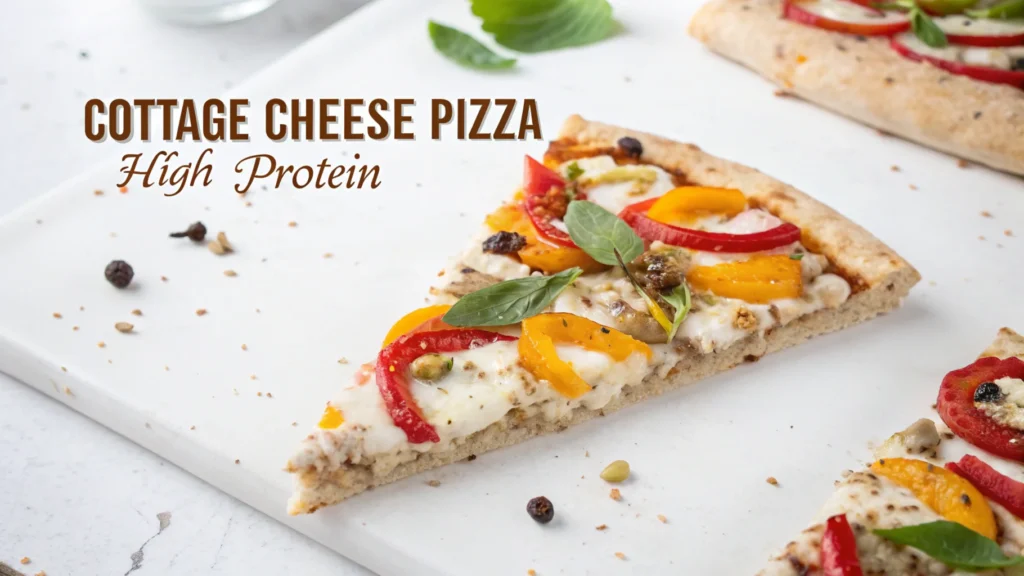
Why Choose Cottage Cheese for Pizza Crust?
Cottage cheese is the unsung hero of high-protein and low-carb diets. Here’s why:
- Packed with Protein: Cottage cheese delivers a protein punch, making it ideal for muscle recovery and satiety. Additionally, one serving of this crust can keep you full longer than a traditional crust.
- Low in Carbs: For those on keto or low-carb diets, this crust is a lifesaver. It allows you to enjoy pizza without overloading on carbs.
- Rich in Nutrients: Cottage cheese is brimming with essential nutrients like calcium, which supports bone health, and B vitamins for energy.
Furthermore, its creamy texture blends seamlessly into recipes, creating a light yet sturdy base perfect for your favorite toppings. Compared to traditional pizza dough, cottage cheese pizza crust stands out as a guilt-free, nutrient-dense choice.
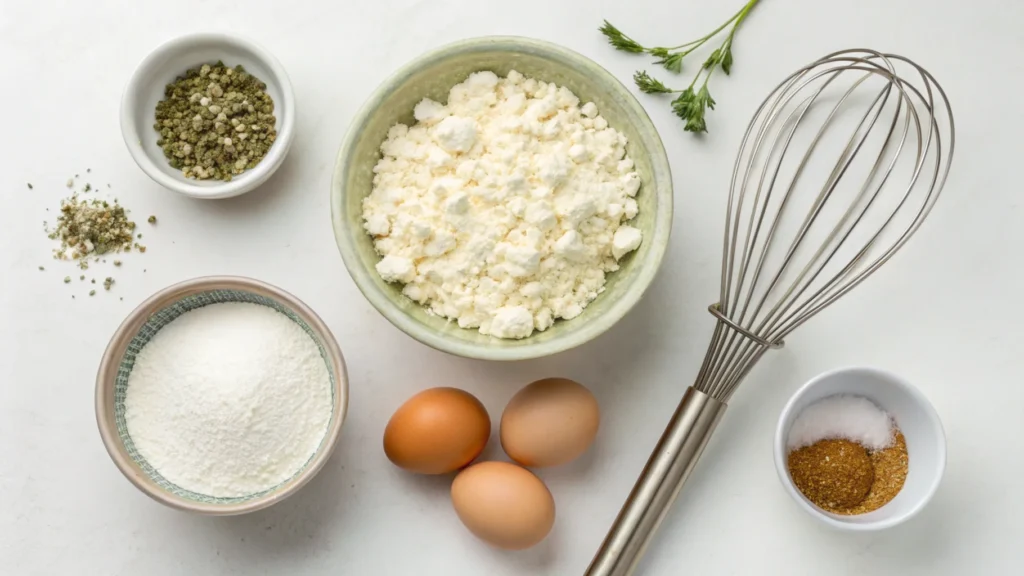
How to Make Cottage Cheese Pizza Crust
Ingredients Needed
Creating a delicious cottage cheese pizza crust starts with gathering just a few simple ingredients. Here’s what you’ll need:
- 1 cup cottage cheese: Use low-fat or full-fat, depending on your preference.
- 2 eggs: These act as the binding agent, holding your crust together.
- 1/2 cup all-purpose flour or almond flour: Choose almond flour for a gluten-free option.
- 1/4 teaspoon baking powder: For a little lift in your crust.
- Seasonings: Garlic powder, oregano, and a pinch of salt enhance the flavor.
Additionally, feel free to experiment with seasonings to suit your taste. For instance, adding Italian herbs or a dash of chili flakes can give your crust a unique twist.
Step-by-Step Preparation Guide
Making cottage cheese pizza crust is as easy as pie. Follow these steps for a foolproof crust:
- Preheat the oven: Set it to 375°F (190°C) to ensure it’s hot and ready.
- Blend the cottage cheese: Use a food processor or blender to achieve a smooth texture.
- Mix the ingredients: Combine the cottage cheese, eggs, flour, baking powder, and seasonings in a mixing bowl. Stir until you get a thick, batter-like consistency.
- Prepare the baking sheet: Line it with parchment paper or a silicone baking mat to prevent sticking.
- Spread the batter: Pour the mixture onto the prepared sheet and spread it into a thin, even layer.
- Bake the crust: Bake for 10-15 minutes or until the edges turn golden and the center is firm.
Once baked, remove the crust from the oven and let it cool slightly. Now, it’s ready for your favorite toppings!
Tips
- Don’t over-blend: Over-mixing the batter can make the crust too dense. Aim for a smooth, spreadable consistency.
- Use parchment paper: This prevents sticking and makes cleanup easier.
- Bake before adding toppings: Pre-baking ensures the crust holds up under the weight of toppings.
Nutritional Benefits
High Protein Content
One of the standout features of cottage cheese pizza crust is its impressive protein content. Cottage cheese, being naturally rich in protein, makes this crust a great choice for anyone looking to build or maintain muscle. Moreover, it keeps you full longer, making it an excellent option for weight management.
Low-Carb and Gluten-Free
If you’re on a low-carb or gluten-free diet, cottage cheese pizza crust fits seamlessly into your meal plan. Traditional pizza crusts are typically high in carbs, but this alternative keeps the carb count low while still delivering flavor and texture.
Additional Health Perks
Beyond protein and low carbs, cottage cheese pizza crust offers additional health benefits:
- Calcium Boost: Cottage cheese is a great source of calcium, essential for strong bones and teeth.
- Rich in Vitamins: It provides important B vitamins that aid energy production and metabolism.
- Low-Calorie Option: Compared to traditional crusts, it’s a lighter choice for calorie-conscious eaters.
The Science Behind Cottage Cheese as a Pizza Base
Why Cottage Cheese Works
Cottage cheese is more than just a healthy snack—it’s a powerful ingredient for creating a cottage cheese pizza crust. Its unique combination of proteins and fats helps bind the crust together without needing traditional ingredients like yeast or oil. Additionally, this makes it an excellent alternative for those seeking lighter, high-protein options.
Moreover, the protein structure in cottage cheese lends the crust a chewy texture, while its natural creaminess keeps it moist. In contrast to traditional crusts, which can feel heavy, the cottage cheese version is light and satisfying.
How It Compares to Traditional Crusts
Compared to traditional crusts, a cottage cheese pizza crust stands out for its nutritional benefits and ease of preparation. Traditional crusts rely on flour and yeast, which can lead to higher carb content and longer preparation times. In contrast, cottage cheese crusts are ready in a fraction of the time and deliver more protein with fewer carbs.
Furthermore, this crust offers a lighter texture while still providing the crisp edges that pizza lovers crave. It’s an ideal option for those who prioritize nutrition without giving up the joy of eating pizza.
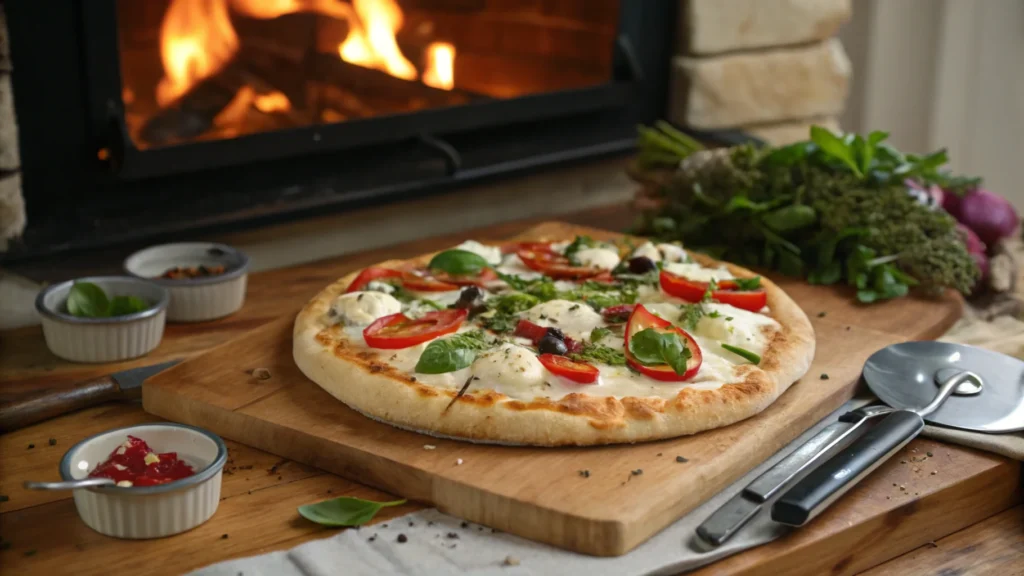
Popular Toppings
Vegetable-Based Toppings
Pair your cottage cheese pizza crust with fresh vegetables for a burst of flavor and nutrients. For instance, zucchini slices add a refreshing, summery touch, while sweet bell peppers provide a crunchy bite. Additionally, spinach and cherry tomatoes create a classic and colorful combination.
Adding a drizzle of olive oil or balsamic glaze enhances the taste without overpowering the natural flavors of the crust.
Protein-Rich Toppings
To elevate your pizza, consider adding protein-rich toppings. Options like grilled chicken or turkey provide a lean, savory addition, while tofu or tempeh cater to vegetarian preferences. Moreover, crumbled bacon or smoked salmon can add a gourmet touch for those looking to indulge.
Not only do these toppings complement the high-protein base of the crust, but they also make the entire dish more satisfying and nutritious.
Flavor-Enhancing Sauces
Don’t overlook the role of sauces in completing your pizza. For example, a classic tomato-based pizza sauce brings out traditional flavors, while a nutty pesto sauce adds a unique twist. Additionally, garlic cream sauce offers a rich and decadent option for a more indulgent experience.
Experimenting with sauces allows you to customize your pizza and discover new favorite combinations.
Cooking Techniques
Best Practices for Baking
Baking your cottage cheese pizza crust properly is essential for the best results. Start by preheating your oven to 375°F (190°C). A well-heated oven ensures even cooking, so don’t skip this step! Additionally, using parchment paper or a silicone mat prevents sticking and makes cleanup easier.
Place the crust on the center rack to allow for even heat distribution. Bake for 10–15 minutes, keeping an eye on the edges as they turn golden. If the crust isn’t firm enough, leave it in the oven for another minute or two before adding toppings.
Grilling and Air-Frying Variations
For those who love experimenting, grilling or air-frying your cottage cheese pizza crust can provide exciting new textures.
- Grilling: Heat your grill to medium and use a pizza stone or grill mat to prevent sticking. Grill the crust for about 5 minutes on each side, or until it’s firm and slightly charred.
- Air-Frying: Preheat your air fryer to 375°F (190°C) and cook the crust on parchment paper for 8–10 minutes. This method creates an exceptionally crispy texture.
These techniques not only add variety but also enhance the overall flavor of your pizza.
Tips for Avoiding Sogginess
To prevent a soggy pizza crust, pre-cook high-moisture toppings like mushrooms or spinach to reduce excess liquid. Additionally, let the crust cool for a minute or two after baking to allow steam to escape before adding sauces and toppings.
Frequently Asked Questions
Can I Freeze Cottage Cheese Pizza Crust?
Absolutely! Freezing cottage cheese pizza crust is a convenient way to meal prep. After baking, let the crust cool completely before wrapping it tightly in plastic wrap or placing it in an airtight container. Furthermore, it can last up to three months in the freezer. When you’re ready to use it, simply thaw at room temperature and reheat in the oven before adding your desired toppings.
What Toppings Go Well with Cottage Cheese Pizza Crust?
The beauty of cottage cheese pizza crust lies in its versatility. It pairs well with almost any topping, from classic Margherita to bold combinations like BBQ chicken or roasted veggies. For example, the mild flavor of the crust complements both traditional and inventive ingredients, making it a crowd-pleaser.
How Does It Compare to Traditional Pizza Crusts?
In comparison to traditional crusts, cottage cheese pizza crust is lighter, lower in carbs, and packed with protein. While traditional crusts might have a fluffier texture, the cottage cheese alternative is perfect for those seeking a nutritious, gluten-free, or keto-friendly option.
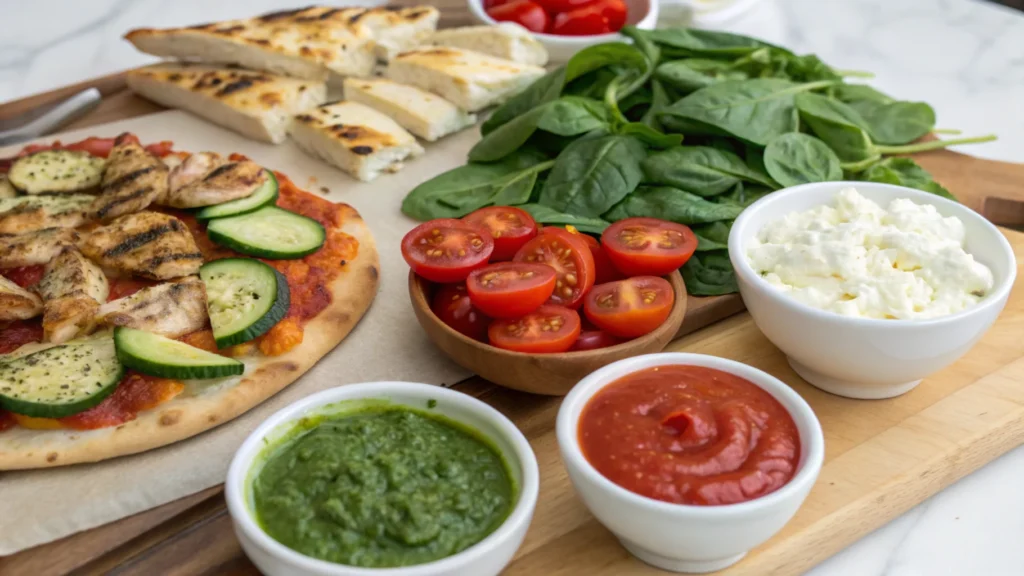
Conclusion: Why You Should Try Cottage Cheese Pizza Crust
The cottage cheese pizza crust is more than just a recipe—it’s a healthier way to enjoy a timeless favorite. Packed with protein, low in carbs, and easy to make, this crust is a versatile solution for anyone seeking a nutritious yet delicious meal option. Moreover, it caters to various dietary needs, from keto to gluten-free, making it an excellent choice for diverse lifestyles.
Not only is it simple to prepare, but it’s also customizable to suit your preferences. Whether you prefer classic toppings like tomato and mozzarella or creative combinations like pesto and grilled chicken, this crust adapts beautifully. Furthermore, the lighter texture and rich flavor make every bite enjoyable without the guilt.
If you’re looking for a way to elevate your pizza game, give this recipe a try. Not only will it transform how you think about pizza, but it’ll also open up a world of healthier meal options.
Explore More Recipes
If you enjoyed learning about cottage cheese pizza crust, check out more creative and healthy recipes at RecipesOlly. For instance, you might like the Pumpkin Banana Loaf for a sweet and wholesome treat. Let your culinary creativity shine!

